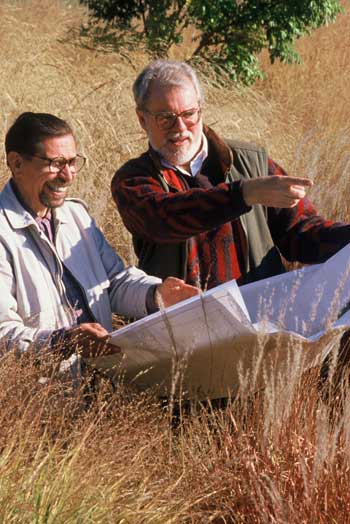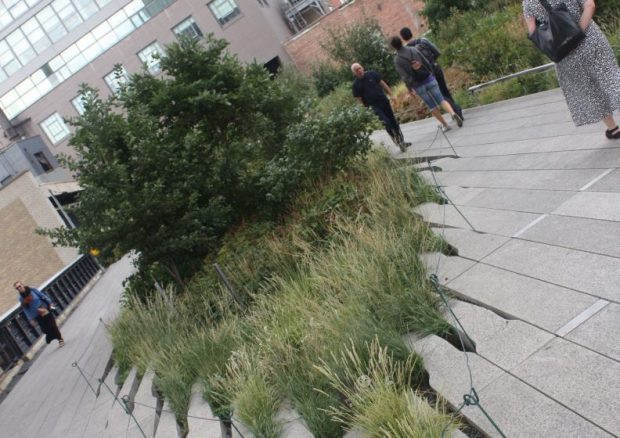

In the realm of landscape architecture, the legacy of Oehme van Sweden & Associates (OvS) stands as a testament to the transformative power of nature-inspired design. In the not-so-distant past, the American landscape was dominated by vast expanses of lifeless lawns, a far cry from the ecological wonders that now grace our public spaces. The catalyst for this change was the groundbreaking New American Garden style introduced by James van Sweden and Wolfgang Oehme in the early 1960s.
The National Building Museum (NBM) in Washington, D.C. is currently hosting an exhibition that pays homage to the enduring influence of the New American Garden. This innovative approach draws inspiration from Native American landscapes, creating a tapestry of large grassy swaths and fields of perennials. According to NBM, this style not only captures the seasonal splendor of the American meadow but also champions ecological sustainability, aesthetic beauty, and ornamental values. Eric Groft, FASLA, a principal at OvS, notes that this approach was “sustainable before it was even called that.”
In its infancy, the New American Garden represented a departure from the formal geometric Modernism of landscape architect Dan Kiley. Van Sweden and Oehme sought to immerse viewers in a world of horticulture, movement, and color. As van Sweden famously declared, “all color is good.”
Linda Jewell, FASLA, a professor of landscape architecture, applauds the exhibition for showcasing the importance of color and life over conventional lawns. She describes the experience as “exhilarating” and a glimpse into the personalities behind the movement.
The exhibition at NBM stands as the largest monographic landscape architecture display in the museum’s history. Visitors traverse OvS’s evolution from early residential landscapes to expansive civic projects. With 28 projects on display, accompanied by 50 striking large-scale photographs, original plans, and historic artworks, the exhibition provides a comprehensive overview of three generations of OvS landscape architects’ work.
Charles Birnbaum, FASLA, president of the Cultural Landscape Foundation (TCLF), emphasizes the significance of OvS’s notable works, such as the Rosenberg Residence in Water Mill, New York, which catapulted the firm to international acclaim. He also highlights the Federal Reserve Board Garden in Washington, D.C., as a pivotal example of how the New American Garden aesthetic can be successfully translated to civic settings.
Groft underscores the evolving nature of the New American Garden style, emphasizing that landscapes are inherently ephemeral and constantly changing. As an illustration, he cites the Slifka Beach House in Sagaponack, New York, a project that has been a lifelong endeavor for him, serving as a testament to the garden’s growth and transformation over the decades.
The New American Garden’s evolution extends beyond aesthetics; OvS consistently explores and incorporates new plants, sometimes from as far as South Africa. Groft dismisses the notion that climate change has been the driving force behind these adaptations, asserting that OvS has always prioritized sustainability and water management through the use of low-maintenance perennials.
Regrettably, many of OvS’s landscapes face threats to their existence. Pershing Park in Washington, D.C., created in collaboration with landscape architect M. Paul Friedberg, FASLA, is at risk of being bulldozed by the National World War I Centennial Commission. Additionally, nine out of the 21 gardens featured in the influential book “Bold Romantic Gardens” have already vanished, marking the 25th anniversary of its publication. Birnbaum calls for a concerted effort to add OvS’s landscapes to the National Register of Historic Places and document them through the Historic American Landscape Survey (HALS) to ensure their preservation.
As the exhibition sheds light on the rich history and evolution of the New American Garden, it serves as a poignant reminder of the need for proactive measures to protect these living works of art. OvS’s visionary approach continues to inspire, emphasizing that true sustainability transcends trends and stands the test of time.





